For the past few days, there have been seven Trumpeter Swans visiting the shallows to the south and west of Kokanee Creek Park. I visited them early this morning.
On their spring migration north, both swan species often stop by Kootenay Lake to feed. It works out well for them as the water level is low and dropping, which enables them to use their long necks to gain access to the aquatic plants in the shallows.
One of the curiosities often seen where swans are feeding are other ducks. This swan is accompanied by a wigeon. The attraction for the wigeon is the material that the swan stirs up as it feeds. Plant material rises to the surface and others with shorter necks gain access to it.
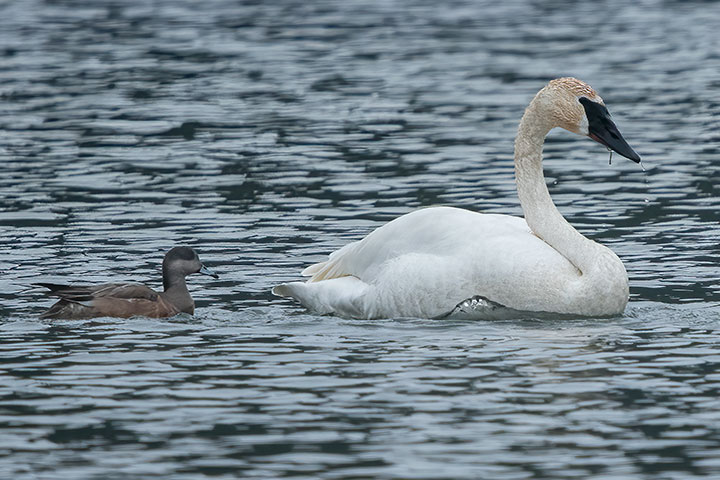
An adjacent family of five Trumpeters has attracted other feeders: Canada geese, Mallards, and Buffleheads.
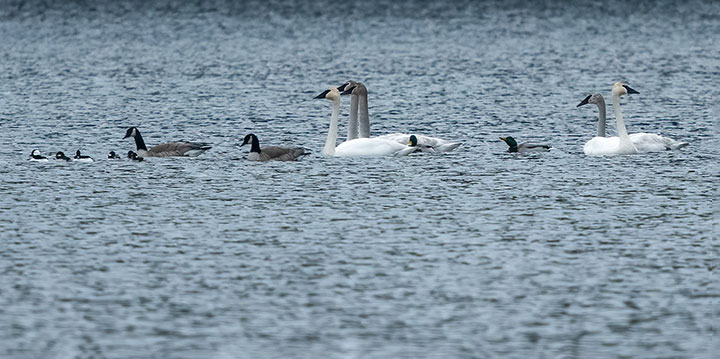
The family of Trumpeter Swans is made up of two whitish adults and three (equally large) greyish chicks. That the chicks are still greyish is telling. Had these been Tundra Swans, the chicks would have already turned white by this time of year.
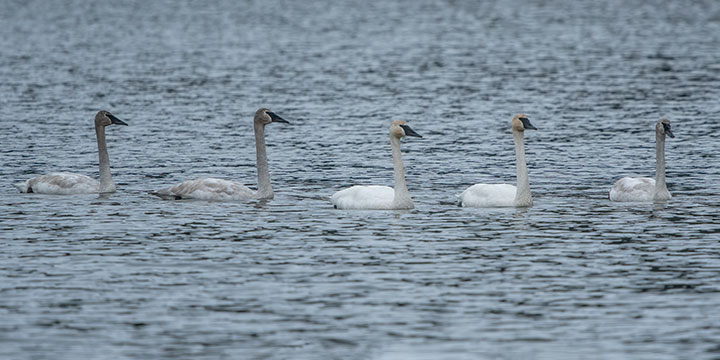
This seems to be a couple, but with no chicks.

I have saved the best two images for the last. Each was taken by my daughter, Cynthia Fraser. The first shows the spread wings of one of the three juveniles.
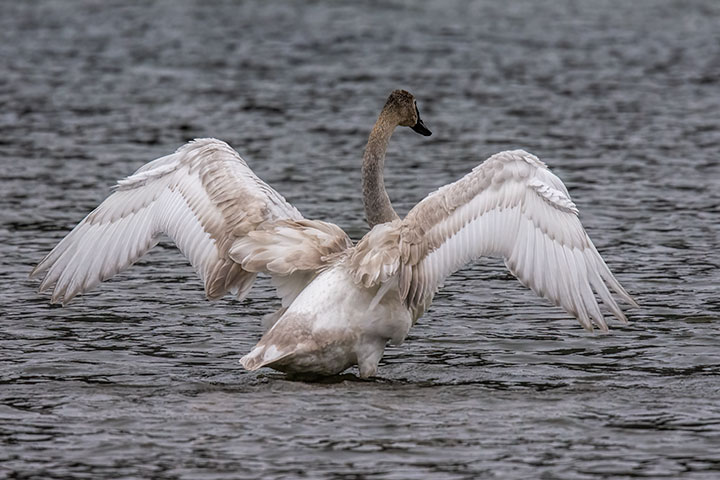
The second shows the spread wings of an adult.
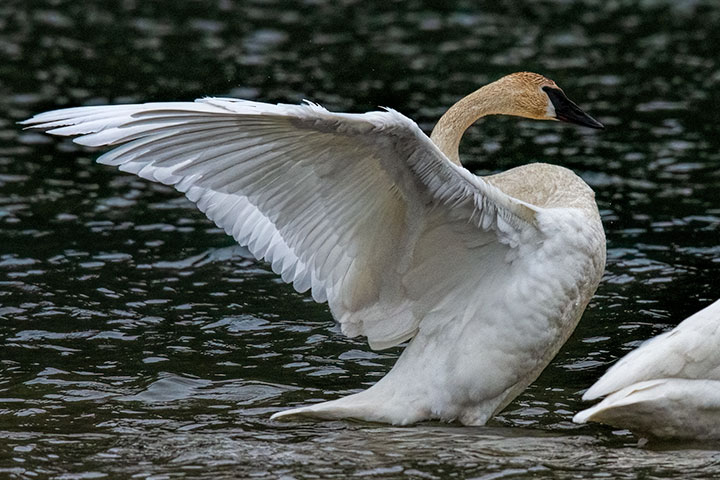

Lovely, lovely…glad to see, since I’ve not driven to the Slocan valley where they’re supposed to spend time there in winter.
Didn’t know about Trumpeters’ offspring remaining gray so long – thanks for the tip. Great photos as always and especially the grebe with its weird foot sticking out!
The parasitic relation of the ducks mining the stirred-up material from the swans reminds me a bit of the relation of remora to shark. Except, in that case, the food is feces.
Meanwhile, on snowshoes on the Little Slocan, we spent time yesterday carefully watching a dipper for several minutes to see if he swam under the ice or alongside it. Breakup is happening and the middle is open, except for large sculptures on the rocks, but the edges are still heavy with layers of ice, and the dipper followed the iceline, until it finally flew onto a large swath of unbroken ice and lingered a few moments, before flying downriver and back into the water.